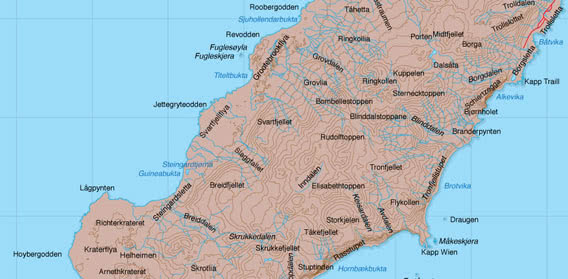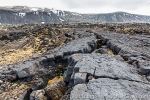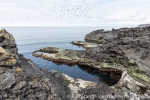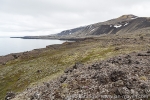
Guineabukta
Guineabukta is situated on the southernmost part of the north coast of Jan Mayen. The name is going back into the 17th century, the origin is not clear. This bay is wide and very open. In contrast to Titeltbukta and Sjuhollendarbukta, there is no sand beach in Guineabukta. The shoreline consists of stones and coarse gravel with large amounts of driftwood, it is completely unsheltered from the sea. Accordingly, there is no known use of Guineabukta in historical times worth mentioning, for example by whalers or trappers.

The density of breeding birds is, however, striking. Especially eider ducks, otherwise not a species generally associated with Jan Mayen, are there in surprising numbers. They are swimming on the little lagoon near the shore and breeding hidden between rocks in the lava fields which dominate the terrain everywhere around Guineabukta. So should you ever happen to hike in that area in the early summer (highly unlikely unless you are a station member or doing scientific fieldwork), keep a distance from the shore to avoid much disturbance to breeding birds.
The dense moss carpets and colourful lichens are very impressive.
Photo gallery Guineabukta
Click on thumbnail to open an enlarged version of the specific photo.copyright: Rolf Stange












